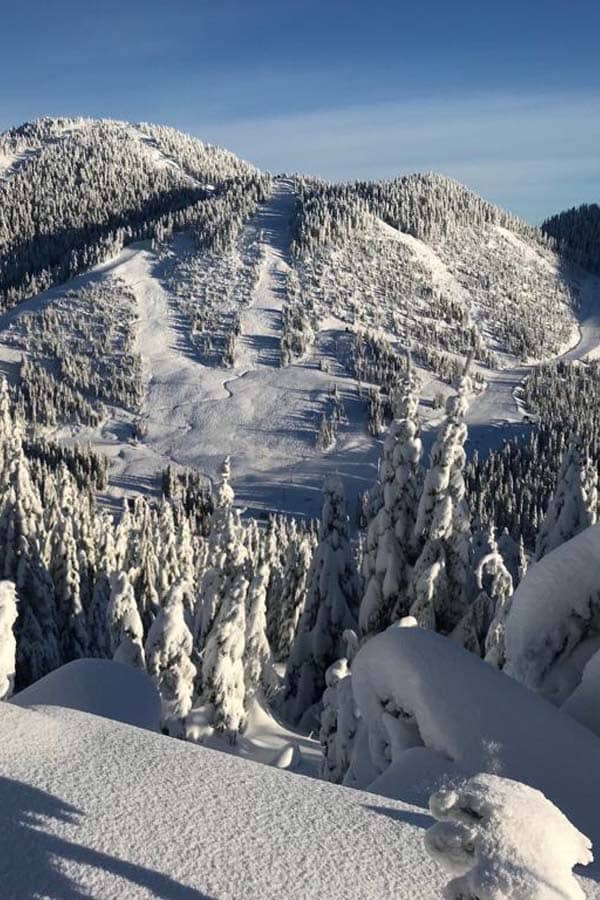TREE WELLS
TREE WELLS & DEEP SNOW IMMERSION
The most important prevention step is to remain on groomed runs, resisting the urge to ski or snowboard through the trees during deep powder conditions, no matter how inviting the untracked powder looks.
It does NO GOOD for your safety if you are under the snow and your partner is waiting for you at the bottom of the lift. If you have any question about what a "timely manner" is to assist someone in a tree well, hold your breath now as you are reading this and the amount of time until you need air is approximately how much time your partner has to help get you out of danger. Other factors such as creating an air pocket or the nature of how you fall into the well may extend this critical timeframe.
Deep snow can be fun, but it can also be extremely dangerous. Follow the guidelines below if you decide to venture off the groomed runs!
SAFETY FIRST

1. Take a Partner
It is critical to ski or ride with a partner who remains in visual contact at all times.
Visual contact means stopping and watching your partner descend at all times, then proceeding downhill while he or she watches you at all times. IF YOU LOSE VISUAL SIGHT OF YOUR PARTNER, YOU COULD LOSE YOUR FRIEND.
2. Carry Personal Rescue Gear
The same basic essentials as backcountry skiers or snowboarders: a transceiver, shovel, probe, and whistle.
3. Remove Pole Straps
If you are a skier, remove your pole straps before heading down a powder slope. Trapped skiers have difficulty removing the pole straps, which can hamper efforts to escape or clear an air space to breathe.
Some of the deaths on mountains in North America which have occurred due to tree well incidents may have been avoided had:
-
The person been with a partner
-
The partner saw the person fall and
-
The partner was close enough to assist digging the victim out in a timely manner.
WHAT IF I GO DOWN?
- If you are sliding toward a tree well or a deep snow bank, do everything you can to avoid going down: grab branches, hug the tree, or anything to stay above the surface.
- If you go down, resist the urge to struggle violently. The more you struggle, the more snow will fall into the well from the branches and area around the well and compact around you.
- Instead of panicking, try first to make a breathing space around your face. Then move your body carefully in a rocking manner to hollow out the snow and give you space and air.
Hopefully, your partner will have seen what happened and will come to your rescue within minutes. If not, experts advise staying calm while waiting for assistance. Survival chances are improved if you maintain your air space. Over time, heat generated by your body, combined with your rocking motions, will compact the snow, and you may be able to work your way out.